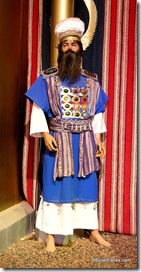NEW LIGHT ON THE PERIOD OF KING DAVID
In the Fields of Archaeology, Ancient History, and Epigraphy
INVITATION
Ben-Gurion University
‘David’s Victory’ Foundation
ACADEMIC CONFERENCE:
NEW LIGHT ON THE PERIOD OF KING DAVID
In the Fields of Archaeology, Ancient History, and Epigraphy
The conference will take place in the auditorium of the central building in the Industrial Park of Omer (near Beer-Sheva) on Thursday, February 12, 2009.
Program of the Conference:
16:00 – 16:30 Gathering and Light Refreshments
16:30 – 16:40 Greetings and Introductory Remarks:
- Mr. Aharon Yadlin, Assistant Chairman of the Executive Board of Ben-Gurion University and
- Former Minister of Education and Culture of the State of Israel
- Prof. Vladimir Berginer, President of the ‘David’s Victory’ Foundation
- Chairman of the Session: Prof. Chaim Cohen, Academic Advisor of the ‘David’s Victory’
- Foundation
16:40
– 17:30 Prof. Yosef Garfinkel and Mr. Sa`ar Ganor, The Institute of Archaeology, The Hebrew
University: “Sha`arayim – A Judaean City from the Time of King David in the Elah Valley”
17:30 – 18:05 Dr. Eilat Mazar, The Institute of Archaeology, The Hebrew University: “The Palace
of David in the City of David”
18:05 – 18:40 Dr. Haggai Misgav, The Institute of Archaeology, The Hebrew University: “The
Ostracon (the New Inscription) from Khirbet Qeiyafa”
18:40 – 19:00 Prof. Vladimir Berginer, President of the ‘David’s Victory’ Foundation: “The ‘David’s
Victory’ Foundation and the Memorial Site Commemorating David’s Victory over Goliath in
the Elah Valley” [including the screening of a new six-minute film]
FREE ADMISSION
Free parking is available alongside the entrance gate to the Industrial Park of Omer, opposite the
Luzzato Building.
The Academic Conferences Organized by the ‘David’s Victory’ Foundation:
2003 – First Academic Conference
2006 – Second Academic Conference
2009 – Third Academic Conference
HT: Agade (via Joe Lauer).







